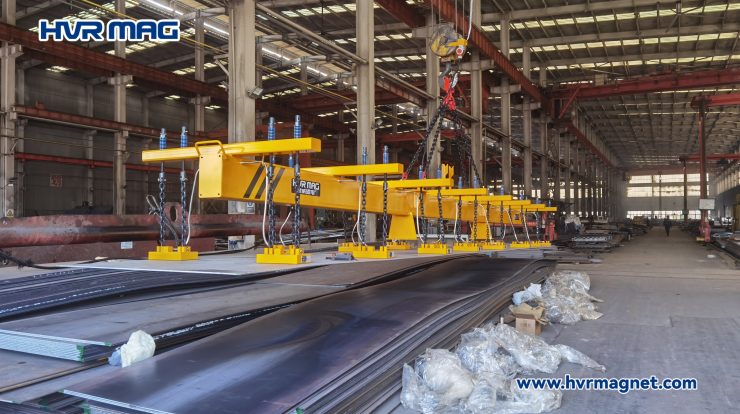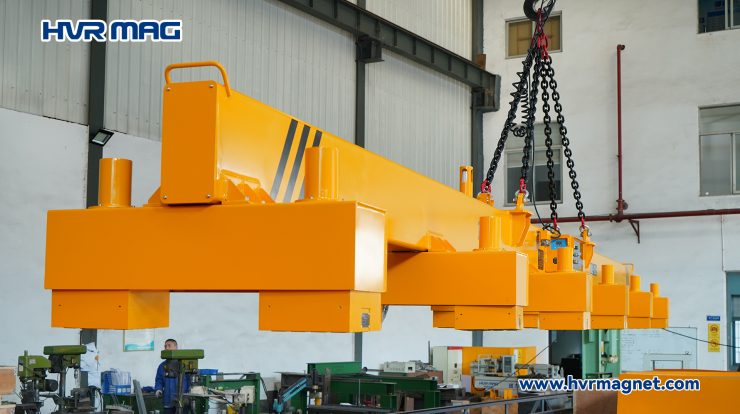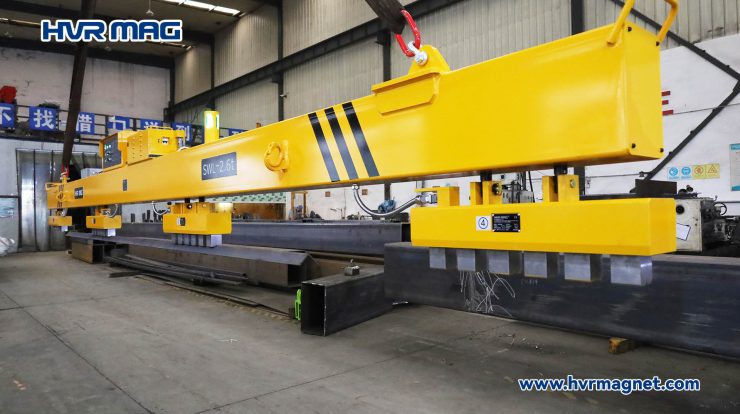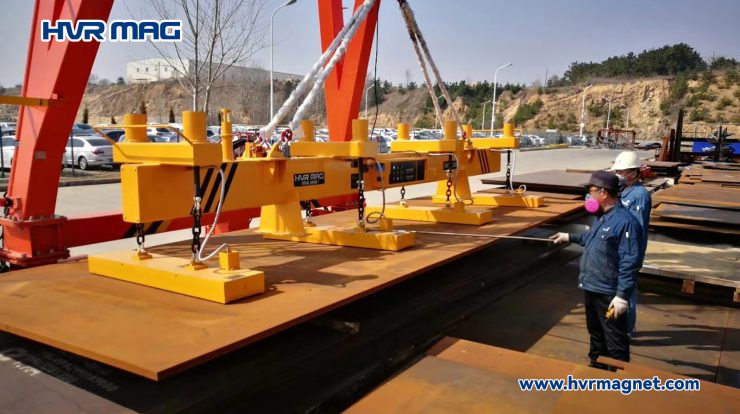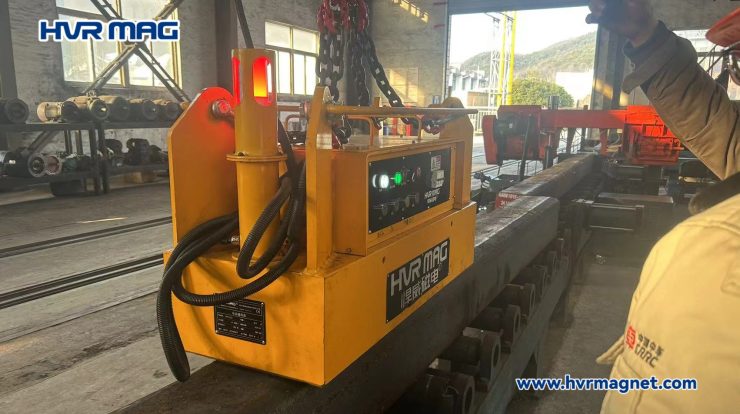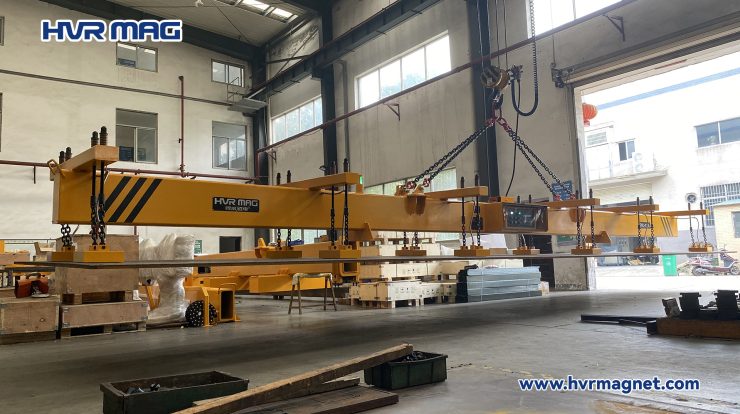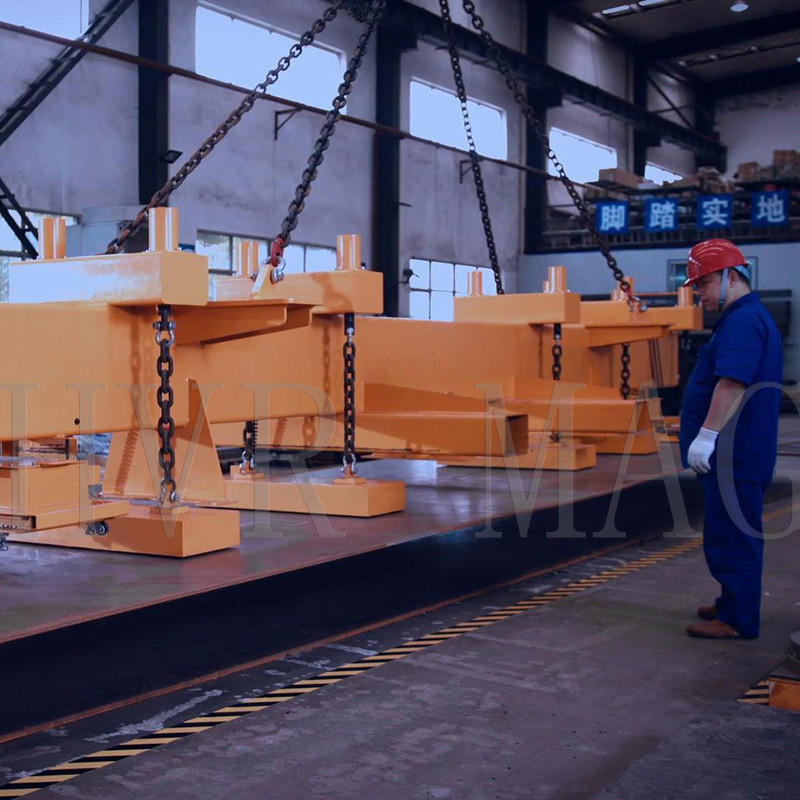
This article is an attempt on explaining lifting magnet safety measures by magnetic lifting solution provider HVR MAG, in accordance with excerpted guidance on the safe use of magnetic lifting devices from HSE(Health, Safety and Executive).

Advice about reducing the risk of both injury to operators and other people, and of damage to plant and equipment from the use of magnetic lifting devices is also provided. Also, the hazards involved and some of the precautions that need to be considered when planning and carrying out handling activities using magnetic lifting equipment.
Main Hazards
The principal safety hazard associated with their use is from falling material. People, plant, equipment, and services in the area of operation could be at risk from being struck by material which becomes detached from the magnet e.g. due to failure of the lifting device following loss of power, or due to incorrect application or operation.
Lifting Magnet Safety Measures
According to HSE guidance of magnetic lifting devices, the following safety measures should be considered and provided where reasonably practicable:
1.Warning devices – equipment for lifting should be fitted with suitable warning devices and indicators to show when it is magnetised or operating at a reduced power level.
HVR MAG’s magnetic lifting beam, is designed with indicator lamp, which shows the working status of magnet modules. Once magnetized, the green light will be flashing.
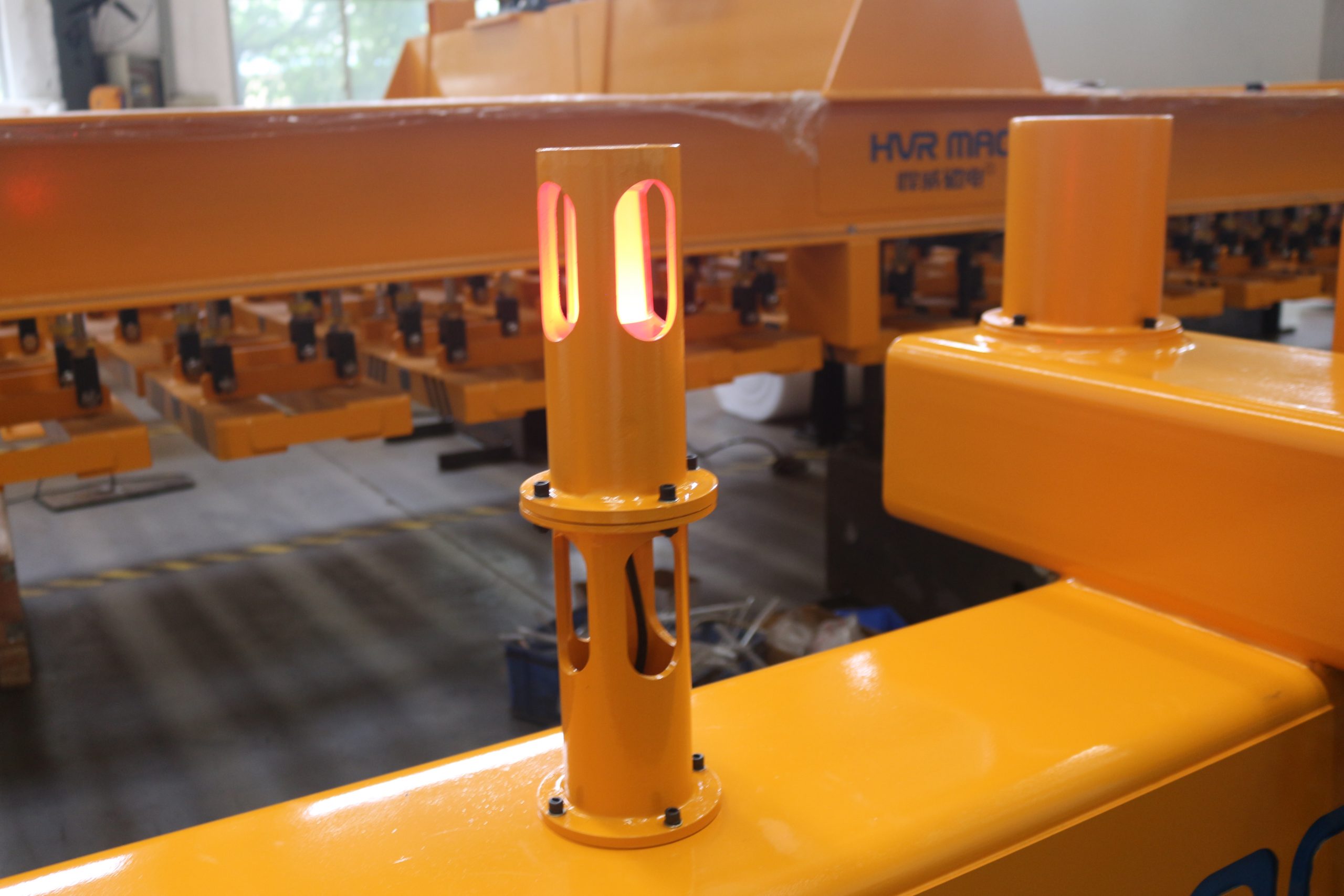
For battery operated lifting magnets, the LED indicator (green) flashes progressively to indicate that the battery is being charged.
Once the battery is fully charged, the green LED strip lights up continuously.
2.Protection against failure of electrical supply – except for the permanent or electro-permanent magnet types, any interruption to the electrical supply could result in a release of the load.
(All HVR MAG’s magnetic lifting systems utilize electro-permanent magnetic technology, which can remain holding of the load even in a sudden power outage – Superior lifting magnet safety.)
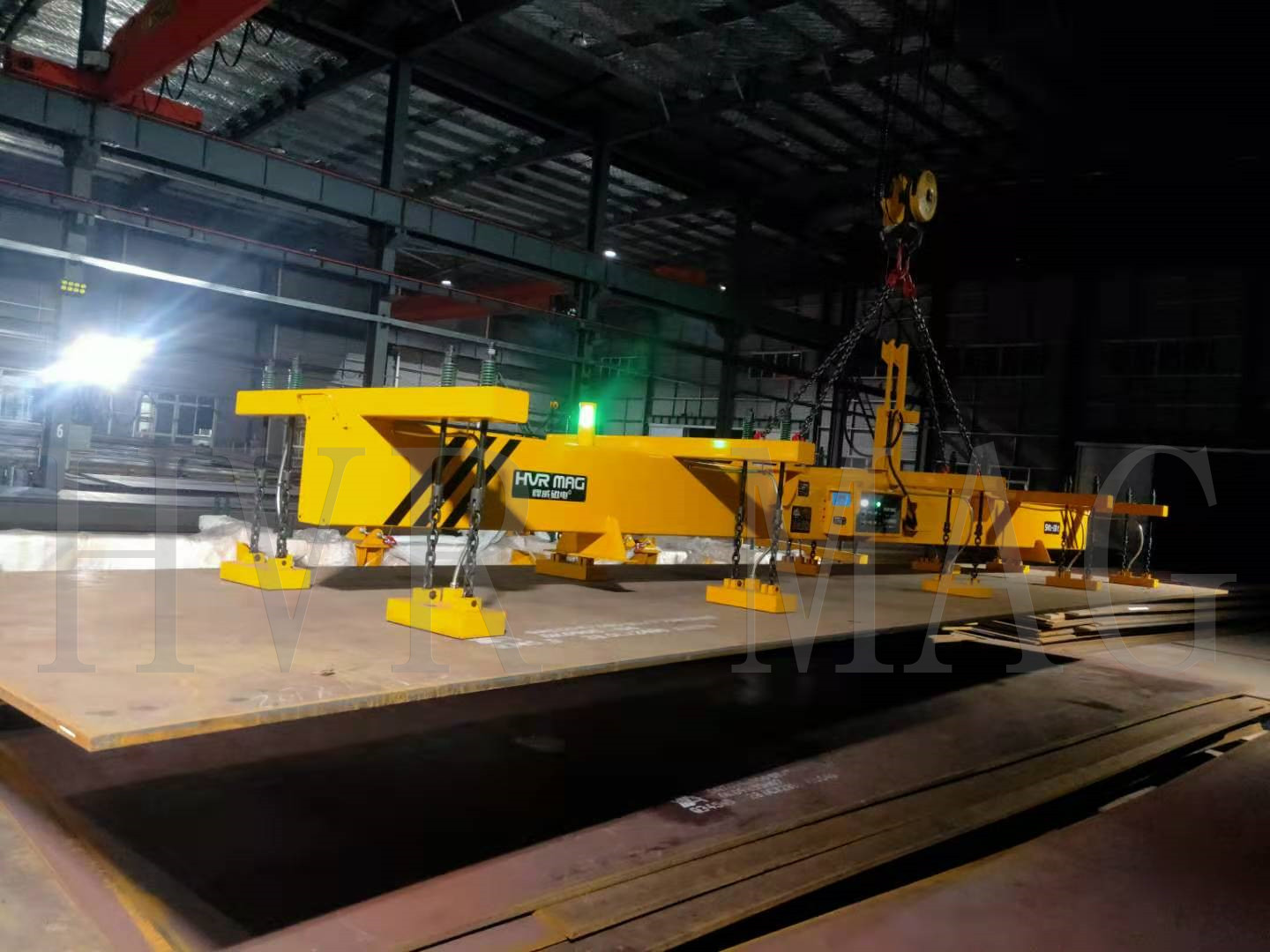
3.Protection against inadvertent operation of the controls – releasing the load should require two control actions.
For HVR MAG’s magnetic lifting beam, only by pressing the “Safe” button and the “DeMag” button simultaneously can the release of load be realized.
Lifting Magnet Safety Factors
All magnetic lifting equipments manufactured by HVR MAG, are designed with a safety factor of 3:1.
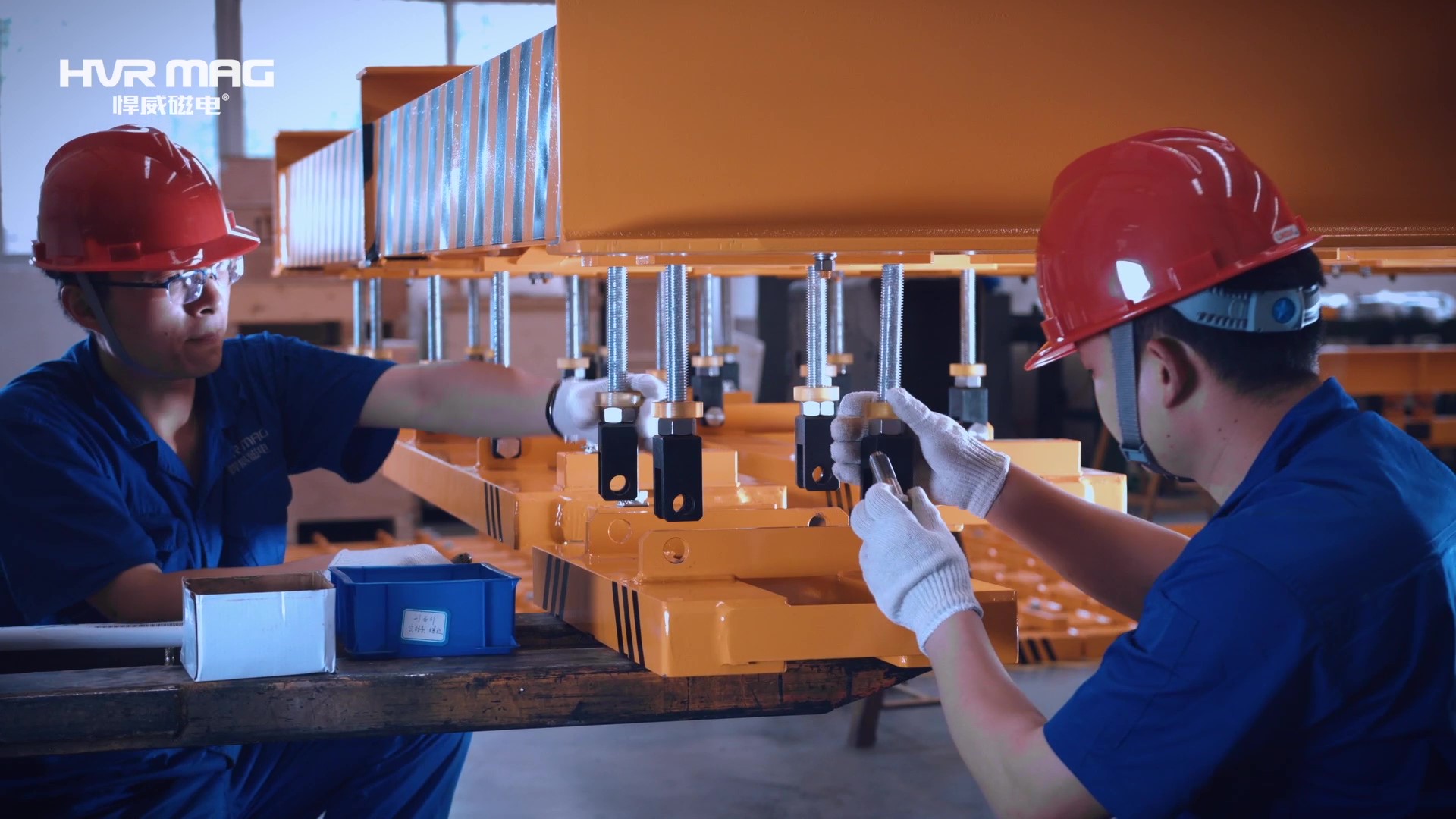
But other than that, there are still some of the factors that have a bearing on the selection of lifting magnets and operating conditions, particularly the SWL(safety working load), include:
Magnetic properties of the load – Magnet lifting is not appropriate for all steels. For example, some stainless steels are not magnetic and other types are only partially magnetic. When handling mixed steel types, it should be recognised that non/partially magnetic items are likely to fall away if magnetised pieces supporting them move.
Load weight, thickness, shape and area in contact with magnet – The surface area of the load and the proportion of the magnet face in contact with it will dictate the number and size of magnets required for safe handling almost as much as the weight and thickness of the load. For example, a billet may only require a single two-pole magnet, whereas a thin plate section of equal weight may require a multiple arrangement of magnets.
Surface profile of materials to be lifted – Where the surface is non-uniform e.g. corrugated, embossed or perforated sheet, flat lifting magnets can be used but must be rated according to the percentage of the load which actually contacts the magnet face.
Composition of the load – A porous load or a load with an internal void may not adhere as well as a solid load.
Lifting of multiple loads (stockholding) – Multiple loads can include several sheets or plates. Power (i.e. flux) reduction can be used to shed the excess load, and the full power then restored to secure the remaining load.
Lifting of multiple loads (scrap) – Where magnets are used to lift many and varying pieces at the same time, for example when handling scrap, penetration of the load by the magnetic flux may be poor at the periphery of the load and part of it may fall off, even though the nominal SWL has not been exceeded.
Stiffness or flexibility of the load – Droop or overhang at the ends of a flexible load e.g. long bar, flat or thin sheet, may cause it to peel off the magnet under its own weight during handling operations. A number of magnets may be selected to give greater coverage over the load area rather than reliance being placed on weight-lifting ability alone. Proper configuration/positioning of the magnets should minimise the sag or droop of the overhanging portions of a load.
Range of sizes to be lifted and frequency of operations – Where assemblies of magnets are likely to be required to handle a range of load shapes and sizes, it is essential that the equipment supplier and/or the person carrying out the risk assessment are provided with sufficient
information about the likely demands on equipment. This should help them determine if magnetic lifting is feasible and safe and, if so, how the system should be configured to ensure it is safe for use.
Nature of the lifting operation – If the load is not balanced and hanging level, or the operation requires the load to be tilted, slippage may occur unless the adhesive force generates sufficient friction to resist it.
Surface condition of load and magnet – The effectiveness of a magnet falls rapidly as the distance between its face and the load i.e. the air-gap, is increased. Good contact between the surfaces of the magnet and the load is essential for the magnet to achieve optimum and safe
performance. To maximise contact, both the magnet face and the load surface should be as smooth and clean as possible and the air-gap kept to a minimum. The surface texture or finish of the load and the presence of paint, rust, oxide scale, oil, ice and snow etc and non-magnetic material on either surface will increase the air-gap, thus reducing the contact and, possibly, the magnetic effectiveness.
Temperature of load and magnet – The temperature of the magnet and load should be taken into account as, for example, ferrous materials lose their magnetic properties with increasing temperature and cease to be magnetic at around 700oC. Magnets should not be used for hot work unless specially designed for this duty, and then only within the specified operating temperature limits.
Capacity of any external electrical power supply – Where an external electrical power supply is required it is important that it has sufficient capacity to supply the magnetic attachment. On mobile lifting equipment it is important that the generator or alternator is of sufficient capacity. Any cables and electrical connections between the power source and magnet should be correctly sized.
Both the lifting magnet safety measures and the factors should be taken into consideration when conducting lifting process with magnets. As an expert on magnetic lifting technologies, HVR MAG provides different types of magnetic lifting devices, such as electro-permanent magnetic lifter, lifting electromagnet, and permanent magnetic lifter. Welcome to visit our website page to learn more.

